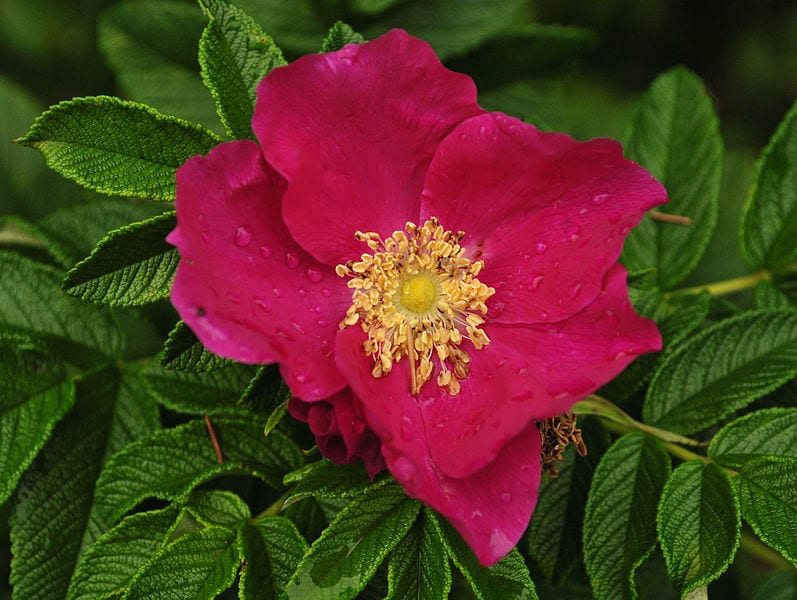
Do you like roses? I love them. Walking along a path marked by these wonderful plants makes me feel great, especially if they are in bloom. And it is that, in addition to having a great ornamental value, they are very easy to care for. But ... when looking for other species, you may easily fall in love with the Rough rose, something that would not be surprising 😉.
If that has already happened to you and you need to know everything about her, don't worry! In this special article you are going to learn how to take care of it and enjoy it to the fullest.
Origin and characteristics
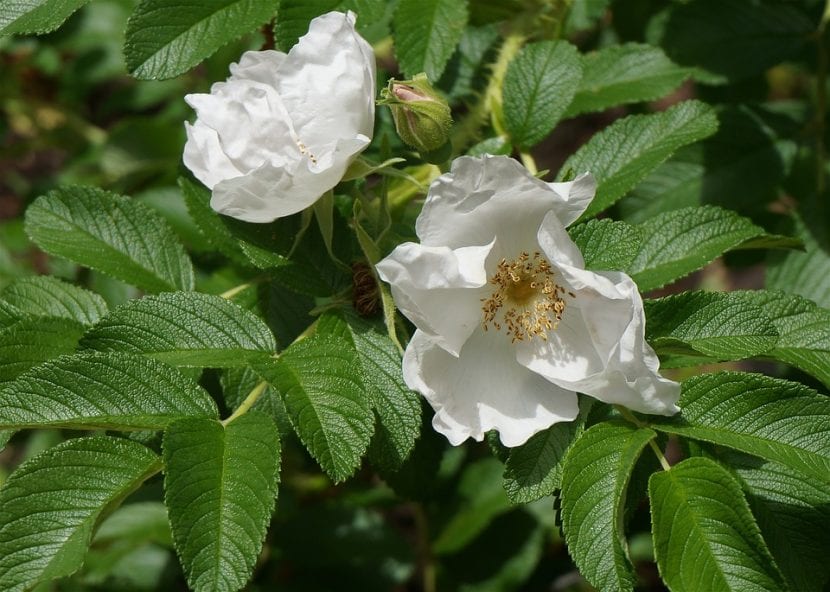
La Rough rose it is a deciduous shrub (loses its leaves in autumn-winter) native to eastern Asia, specifically China, Japan, Korea and southeast Siberia. Its scientific name is the same, Rosa rugosa, but it is also known as Japanese rose or Ramanas rose; in Japanese as »beach pear». Grows to a height of 1-2m, with stems armed with short, straight spines 3 to 10mm long.
The leaves are pinnate composed of 5-9 leaflets, each measuring 3-4cm long, with a rough touch on the surface. They are green, except in autumn when they turn yellow before falling. The flowers, very aromatic, measure 6-9cm in diameter, and can be of different colors: pink, white, red. Its flation season runs from summer to fall. Once they are pollinated, the fruit called rose hip begins to ripen, which will measure 2-3cm in diameter.
Varieties
There are many, but we have selected these:
- Rugosa rose 'Alba': it has very fragrant white flowers.
- Rugosa rose 'Rubra': it is the same as the previous one, but they are red.
- Rosa rugosa 'Roseraie de l'Haÿ': of beautiful double roses (with double crown of petals) of wine color.
- Rugosa rose 'Fru Dagmar Hastrup': the leaves are apple green and the flowers, although simple, are a magnificent pink color.
What are their cares?
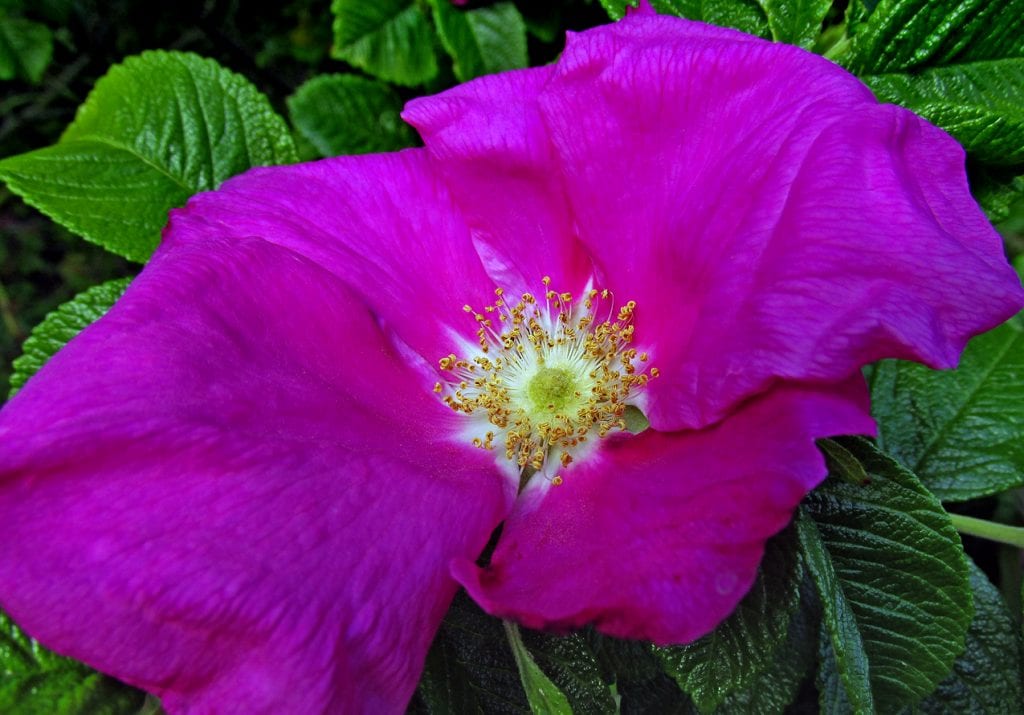
Do you want to have a copy? If so, then we will explain how you should take care of it:
Location
This is a rosebush to have abroad, either in full sun or in semi-shade.
Earth
- Flower pot: you can use universal growing medium mixed with perlite in equal parts.
- Garden: it must be fertile, with good drainage. In the case of having a bad soil, poor in nutrients or with difficulties to absorb water, what you can do is dig a planting hole of 1m x 1m, put blocks -of the fine ones- around and at the bottom a mesh of shade. Then you would only have to fill it with substrate and plant your rose bush there.
Irrigation
The frequency of watering will depend on the location as well as the weather, but in general it has to be watered 3-4 times a week in summer and somewhat less the rest of the year. In the case of living in a drier area, it will be watered more, and if it is more humid less.
To avoid problems, the humidity of the soil must be checked before watering, either by digging a little -about 5cm-, inserting a thin wooden stick to the bottom (if when removing it it comes out with a lot of adhering soil, do not water) , or if it is in a pot, pick it up once watered and again after a few days (as dry soil weighs less than wet, this difference in weight can serve as a guide to know when to water).
Subscriber
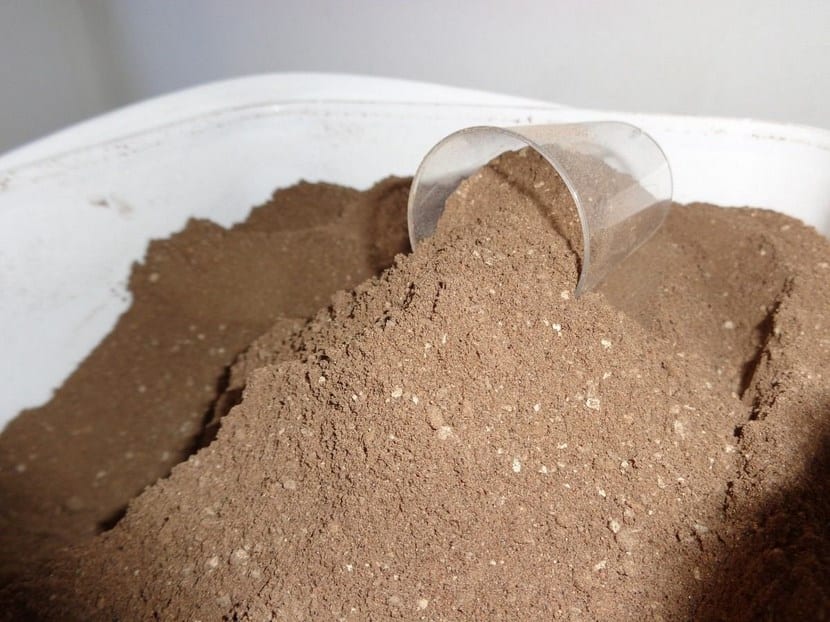
Guano powder.
From early spring to late summer It is highly advisable to fertilize Rosa rugosa with ecological fertilizers once a month. One highly recommended is guano, since it is very rich in nutrients as necessary as nitrogen or potassium, and also has a rapid effectiveness. You can get it here.
Multiplication
It multiplies by seeds and by cuttings. Let's see how to proceed in each case:
Seeds
They are sown in autumn, when they finish maturing. You have to follow this step by step:
- First, they are extracted from the fruit.
- Then a pot is filled with universal growing medium and watered.
- They are then sown on the surface, and covered with a thin layer of substrate.
- Afterwards, it is watered again, this time with a sprayer.
- Finally, the pot is placed outside, in semi-shade and it is kept humid but not flooded.
Thus, will germinate in spring.
Cuttings
It is the fastest way to get new copies. It is done at the end of winter (February / March in the northern hemisphere). The step by step is as follows:
- The first thing is to cut a stem that is growing healthy and that measures about 40cm.
- Afterwards, the base is impregnated with homemade rooting agents, or with rooting hormones preferably liquid but can be powdered.
- Then a pot is filled with universal growing medium and watered.
- Next, a hole is made in the center and the cutting is planted.
- Finally, the pot is finished filling and it is placed outside, in semi-shade.
If everything goes fine, will emit its own roots after 2-3 weeks.
Pruning
Like all rose bushes, wilted flowers must be removed, and stems trimmed in late winter. You have more information here.
Plagues and diseases
It's very tough, but if the growing conditions are not the most suitable it can be affected by mealybugs, aphids o Red spider that you can treat with specific insecticides, or with diatomaceous earth (you can get it here). The dose of the latter is 35g per liter of water.
In the case of watering too much fungi can appear, such as roya, which is treated with fungicides.
Rusticity
La Rough rose withstands cold and frost down to -10ºC. In addition, it can live in coastal areas as it is adapted to sandy soils.
Uses
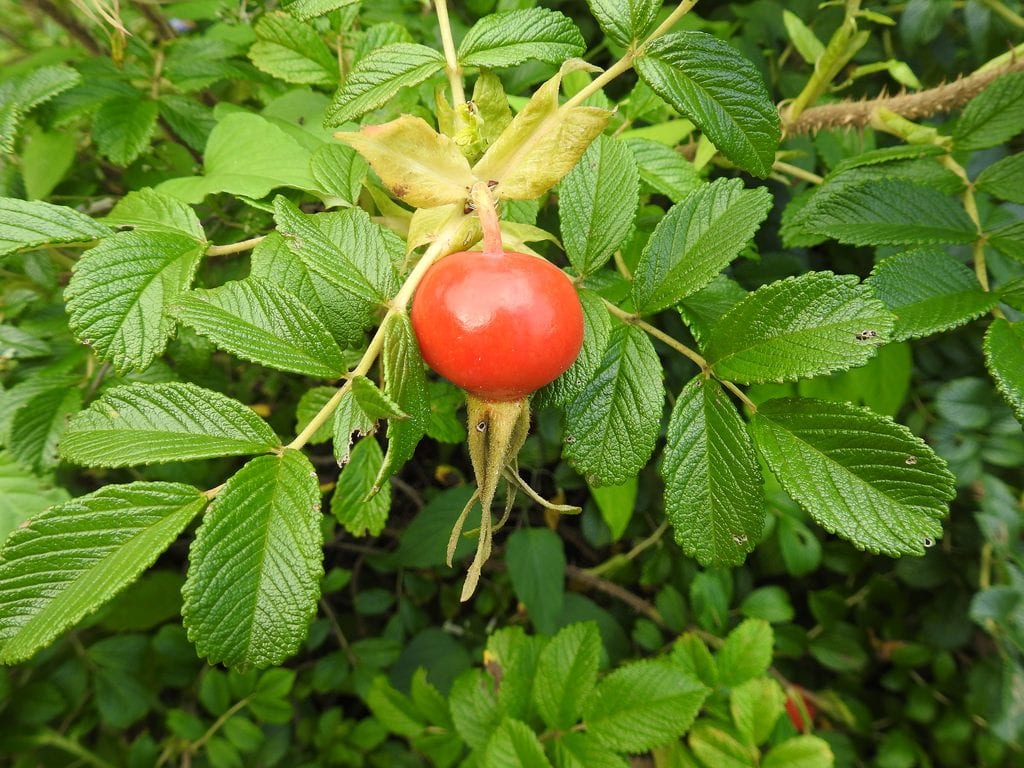
Apart from being used as an ornamental plant, being able to have both in pot and in the garden, rose hips are edible and very nutritious; in fact a small spoonful of pulp contains as much vitamin C as 5 oranges. Also, the petals can be used to make jams or jellies.
What do you think?
Very good article. Complete and clear.
I'm in Denmark on vacation and there are hundreds of them. I will take cuttings with me and I hope a good result Here they say that they are very resistant
We are glad you liked it. Good luck with those cuttings!
The information is very complete ...
Hi Marne.
Thank you very much for your opinion 🙂
Regards!